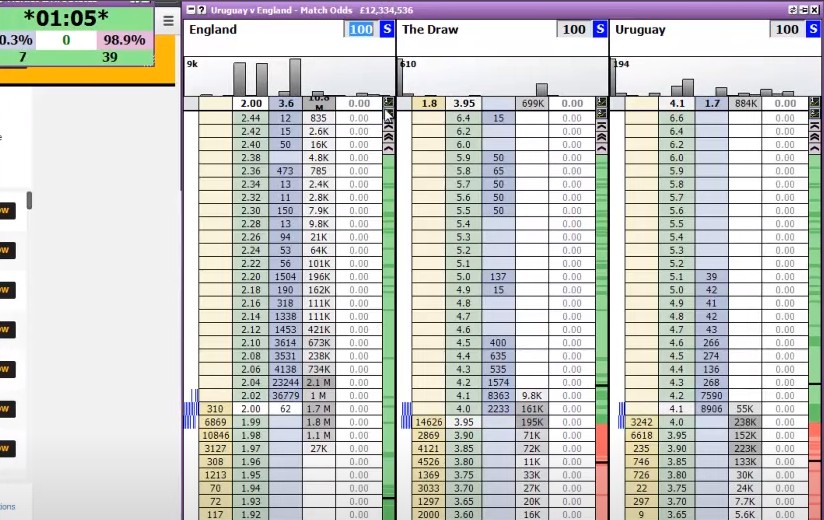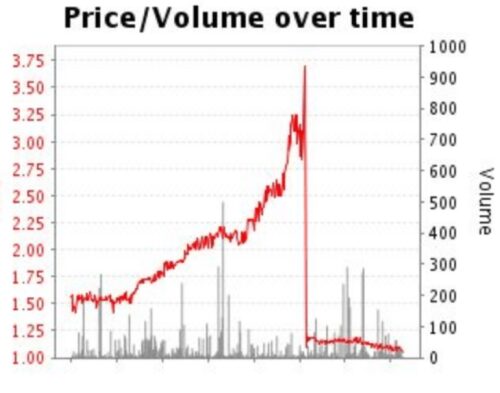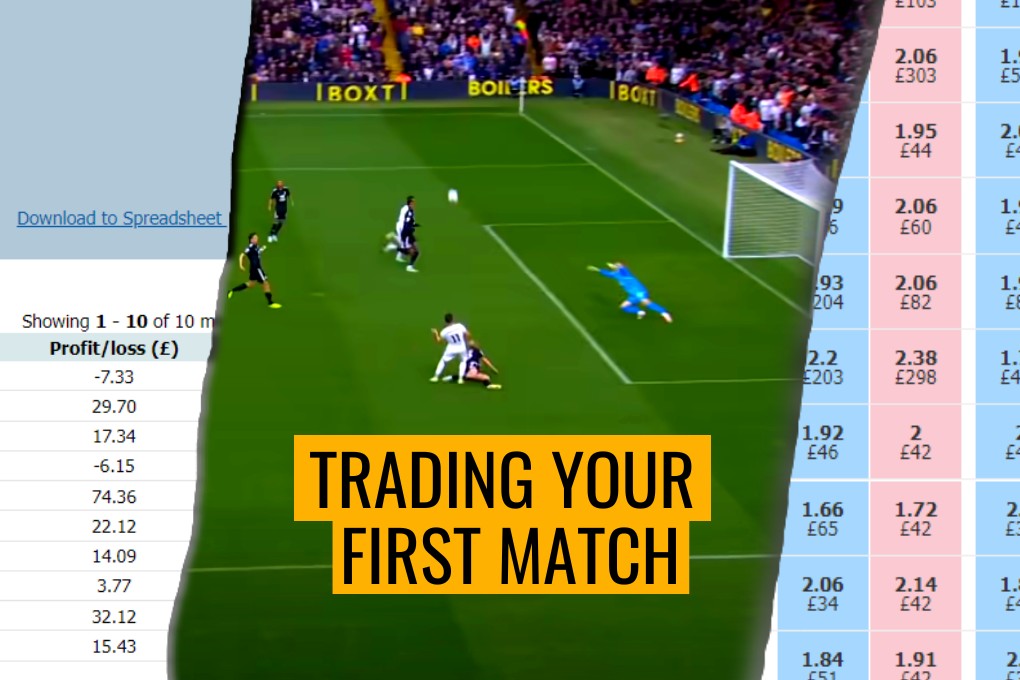Out of all the sports, football attracts more betting action than any other. While a large portion of this is wagered with bookmakers, the volume on the exchange is huge.
There are multiple ways to trade football markets. This can make it incredibly daunting to new traders as simply knowing where to start is often one of the biggest roadblocks.
If you’ve never traded football before, this post is for you.
You’ll learn everything you need to know to get your foot in the door. I’ll go over some basic requirements and most common approaches to football trading strategies, entering the market and getting out safely.
Hopefully for a profit!
Trading Your First Match: What Do You Need?
A common mistake amongst new traders is to think you need an expensive multi-screen PC setup. You don’t.
To get started with football trading, you don’t need much hardware. You don’t even need any specialist software to start, although it will help. Early on, buying complicated hardware will only distract you from the real goal. That is, to learn how to trade.

Although it is helpful to start with micro stakes, you can choose to paper trade. This requires no money at all. Just a pen and paper to write down your imaginary trades. Most find it more realistic to use real money while learning, even if it is in tiny amounts. Trading is more of a mental game than anything and getting used to handling money and risk correctly is crucial.
On that note, the number one requirement for trading your first football match is a clear head. Trading is one massive mental game. There may be research, stats, tech and other gizmo’s at play but without a clear mind, you are destined to fail. You will need to make quick and rational decisions. Go for a walk or do something relaxing to clear your head before getting stuck in. Your account balance will thank you for it after. Whatever you do, don’t delve into the markets whilst angry or stressed out.
How to Approach Football Trading:
There’s no limit to the number of ways to trade a football match. Most successful traders will have a number of strategies at their disposal. The trick is to use the right strategy at the right time. That can be an impossible task if you are new to trading, so it’s best to master one at a time.
This will mean that you will be trading less frequently as you won’t have a strategy for every market. The temptation to trade every market on Betfair will be strong but rest assured, even the pros spend most of the time sitting on their hands!
Here are a few of the most common football trading strategies to get you started:
Laying the draw is one of the most well-known strategies that most beginners tend to try out fairly soon in their sports trading journey. Many of the pros still use it to great advantage too. This strategy, like many football strategies, is all about match selection. Pick a match that has a low chance of resulting in a draw. While the score is still level (0-0, 1-1 etc), lay the draw. You should place your lay bet at a time that will offer the most value. Many traders choose to wait for the odds to drop in play before laying but this is entirely up to you. Test, test and test again to find a winning setup.

Trading over 2.5 goals is incredibly simple but still one of the most effective football trading strategies. This strategy requires some research beforehand. Ideally, you should be backing over 2.5 goals if you think the odds are higher than they should be. Traders call these “value odds”. The idea is to trade out after one or two goals to secure a profit. Your aim is to minimise risk whilst managing to pocket some profit, however small. After all, this is trading and not straight betting.
Laying the Correct Score is quite similar to laying the draw. The obvious difference is that the score does not need to be a draw in order to enter the market. For example, if a team is 2-0 up with 5 minutes and lots of energy to go, you may look to lay the 2-0 score at low odds. Laying at lower odds gives us bigger returns for less risk.
Placing Your First Trade…
Have a pen and paper or spreadsheet at hand to record your thoughts and results about each trade. This will be incredibly helpful in the future to figure out exactly where you are going wrong and how you can improve.
Regardless of the strategy, you choose to use, all that really matters is when you enter and exit the market. The time of entry will depend on the strategy you are using. For example, you may look to lay the draw with 5 minutes to go before the final whilst. Using a different strategy, you might back over 2.5 goals before the game even begins.
In time you will have enough information about previous trades to consider adjusting your entry timing to a point which may be more profitable. Let the data guide your trading decisions.
Different strategies will require certain qualifiers before entering the market makes any sense. For example, you might wait until a striker has been benched or until the odds have reached a certain point.
It’s best to use small stakes at first. Trading can evoke emotions you don’t even know you have and using large stakes will only amplify those.
Exiting a Football Trade Safely:
The primary reason you should ever exit a trade is that the profitable opportunity is no longer there. After all, you only entered the market because there was a good trading opportunity.
Why stick around if it’s no longer there?
Of course, you may want to use a stop-loss as a safety net but be careful… You don’t want to get stopped out of a good opportunity, only to find the market go right where you had planned.
I find it’s always best to have an exit strategy before you even enter. At first, it may help if you write it down. It will help you stick to the plan when everything is happening at once.
Sometimes you will come out with a loss, other times you may just scratch back to zero. It’s all part of the game and is perfectly normal for traders of any level. Keeping calm, sticking to the plan and reviewing previous trades will help bring more profitable outcomes as time goes on.
If you like the idea of trading the exchanges there’s an additional resource here via the Betfair trading school.

